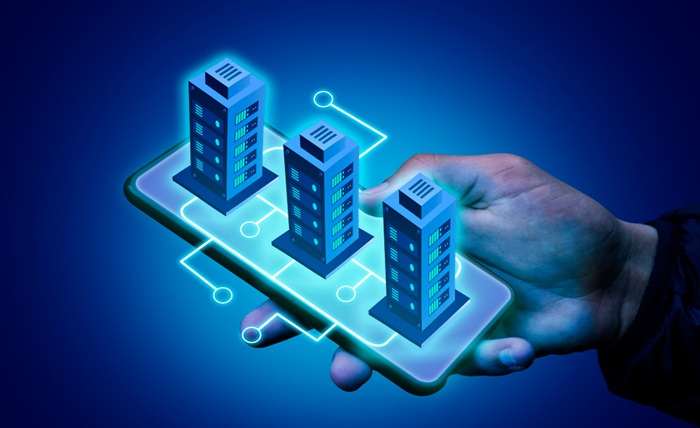
Introduction to Smart Buildings
Smart buildings represent a leap forward in architecture, embedding advanced technologies into the very framework of structures to optimize performance and sustainability. These intelligent settings are designed to manage smart buildings with enhanced efficiency, creating environments that are responsive, adaptable, and more attuned to their occupants’ needs.
The journey of smart buildings from a futuristic idea to a present reality illustrates a significant transformation in the construction sector. The increasing demand for innovative infrastructures is primarily influenced by the global push for sustainability, an initiative many acknowledge in sustainable architecture. As environmental issues take center stage in policy discussions, the importance of smart buildings in lowering carbon footprints becomes ever more essential.
Key Technologies Transforming Buildings
The technological bedrock of smart buildings is the Internet of Things (IoT), which facilitates seamless connectivity among devices, systems, and occupants. This connectivity allows for real-time data streaming and analysis, enabling precise control and predictive maintenance—a transformation that mirrors advancements in other tech-driven sectors.
Artificial Intelligence (AI) works with IoT to drive analytics and make informed decisions, reducing downtime and enhancing the user experience. Energy management systems tightly monitor consumption patterns, employing smart meters and adaptive algorithms to maximize energy efficiency. With advanced sensors and automated controls, intelligent lighting systems adjust to daylight availability and occupants’ presence, thus slashing unnecessary energy usage.
Security in smart buildings is also witnessing a paradigm shift. Enhanced access control systems employ biometrics and digital keys, providing a seamless yet secure environment. These technologies safeguard physical spaces and data integrity, ensuring end-to-end protection in an age where digital security is paramount.
Benefits of Adopting Smart Building Solutions
Embracing cutting-edge building technologies presents many advantages, particularly in enhancing energy efficiency and achieving considerable cost savings. By integrating intelligent systems, buildings can significantly lower energy consumption, translating into impressive financial benefits. These advancements do more than improve the bottom line; they also align with broader environmental objectives by minimizing the reliance on non-renewable resources. This approach helps organizations save money and fosters a sustainable future by reducing the overall carbon footprint and promoting a healthier planet.
Innovative environments ensure comfort and convenience for occupants. With automated adjustments to lighting, temperature, and air quality, occupants experience a harmonious blend of technology and habitat. This level of control extends to personal devices, where individuals can customize their settings, fostering an environment that aligns with personal preferences while maintaining energy conservation.
Moreover, enhanced security systems offer peace of mind, integrating facilities management with cutting-edge technology to protect assets and occupants robustly. Intelligent surveillance and incident response systems further contribute to an environment prioritizing safety.
Challenges in Implementing Smart Technologies
Transitioning to smart buildings presents a range of benefits, yet it is not without its challenges. One of the most significant hurdles is the substantial upfront financial investment required, which can be daunting for many developers. The costs associated with implementing advanced, innovative technologies can be steep, creating a considerable barrier to entry. This challenge is magnified by the fact that the benefits of these investments may not be immediately apparent, making it difficult for developers to justify the expenditure in the short term.
Data privacy and security issues are significant, as the dependence on data-driven solutions necessitates robust cybersecurity protocols. Protecting the vast data streams generated by smart buildings from breaches is crucial to maintaining trust and security.
Additionally, the complexity of blending new technologies with existing infrastructure cannot be overstated. This integration demands skilled professionals and can entail significant logistical planning. Overcoming these technical challenges requires strategic foresight and investment in personnel with the requisite expertise.
Case Studies: Successful Smart Buildings
Some projects illustrate the successful transition to innovative building technologies. The Edge in Amsterdam is a pioneering example, known worldwide for its integrated innovative systems that dramatically enhance energy efficiency. This building is a model for others aiming to implement comparable technologies, as it is outfitted with an extensive range of sensors and IoT devices.
These case studies highlight the technical achievements and underscore the adaptability and innovation possible when intelligent strategies are employed. The lessons learned from these examples are invaluable for future innovative building projects, offering clear evidence of the numerous benefits such systems can deliver.
Future Trends in Smart Building Development
As we gaze into the future of advanced construction technology, numerous trends are ready to transform the industry. Implementing 5G networks is anticipated to significantly enhance connectivity in smart buildings, providing increased speeds and lower latency, essential for the real-time functioning of IoT devices and systems.
Further innovations in building materials and construction are expected to emerge, as well as new standards and regulations designed to guide the safe and sustainable adoption of innovative technologies. These developments will undoubtedly influence how smart buildings are designed, constructed, and maintained.
Conclusion: Preparing for a Smarter Future
The movement towards smart buildings is more than a passing trend—it represents a substantial shift in how structures are conceptualized and their roles in urban landscapes. As the technologies enabling these paradigms become more accessible, the impetus to embrace innovative solutions grows.
Organizations and developers are encouraged to navigate these challenges with open eyes and forward-thinking strategies, recognizing the long-term benefits that outweigh initial investments. These innovative technologies promise a future where buildings are more efficient and attuned to human habitation nuances, enriching urban experiences and contributing to sustainable development.




